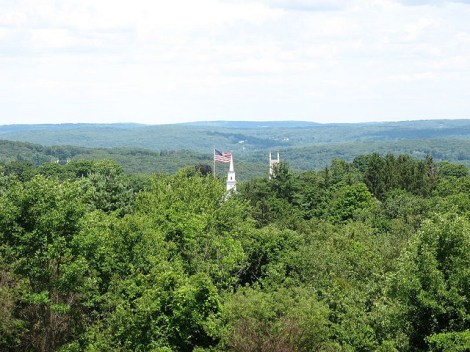
askjoanneNewtown, Conn., from a distance.
What’s amazing about the tragedy in Connecticut today is how little we do to prevent things like it from occurring. The American people, the putative leaders of a democratically elected government, see shooting after shooting play out — in movie theaters, shopping malls, elementary schools — and get saddened or outraged until our emotions dissipate. This is why opponents of gun control insist that the time is never right to discuss gun violence. When we’re angry, when our passion is tangible, literally can be tasted on our tongues, the condescending demand is to wait. To calm down. Let that anger dissipate, so nothing is done. Fury is a powerful motivator but a fleeting one. And once it fades, those who righteously or cynically want to continue America’s gun culture exhale and move forward.
The bias among elected officials is toward two things: inertia and capitalism, to do nothing unless money is at stake. Doing something carries risk; changing the status quo means that some people will be forced to change their behavior. This is why it’s much easier to pass legislation affecting the poor and dispossessed — they have less power to exercise. What tips that balance is when politicians see a coming surge of opposition or have a groundswell of support they can leverage. Popular movements of those outside the established power structure are rare because they are hard and they are incremental and they are easily defused or redirected.
The most recent popular movement seeking to upend the entrenched power structure was Occupy Wall Street. It surged forward, but fell apart for a variety of reasons: the onset of winter, a lack of direction, and the progressive obsession on derived consensus. It also fell apart because the powerful sapped the rage of the protestors, redirected it for other purposes or flowed with it to build credentials. In the end, all that was left were the endlessly furious, the mad. Occupy was the closest we’ve come to reshaping a more egalitarian society, and it didn’t come close at all.
Earlier today, a kid walked into a school where his mother taught and shot 20 children to death. Standing in a classroom, with desks that came up to his knees or maybe on a brightly colored mat that displayed the letters of the alphabet, this kid still in his 20s aimed a gun at small children and shot them dead. Imagine that scene. Stop and think about what that looked like. The children’s drawings on the wall. The cartoonish, oversized lettering of the teacher on laminated posters. Think about being one of the last children to die.
What happened today was as bad a scenario as can be imagined in a country where gun laws are so lax as to be a punchline. And think about what was happening today among those whose careers or income are predicated on ensuring that those laws are kept lax, places like the NRA. At the NRA today, they had a conversation about how to counteract the predictable push for new regulation. Maybe the NRA even had to cancel another round of focus groups it had scheduled, part of an expensive, long-term effort to generate phrases like “it’s too early to politicize this” or “if more people carried guns, we’d be safer” — phrases that have resulted in looser gun control after tragedies, not stricter. Think about the institutionality of America’s gun culture, written into the Constitution under some interpretations and fueling millions of dollars a year in gun sales to perpetuate a particular impression of self-importance. This is the political and economic force working to dissipate and co-opt America’s fury.
After more than 200 years and countless mass shootings, we as a self-governing people have weaker restrictions on gun ownership than even two decades ago. The rigid political wall presented by advocates of laissez-faire murder is undented. And in a week, the fury over it will almost certainly have faded again, as it has four times before during Obama’s first term alone — even after this unspeakably horrible day.
I mourn deeply for those killed today, both the children and the adults the town of Newtown hired to teach and protect them.
But consider this: On any other day, my obsession would be on climate change, a much different and less immediate threat, with much richer and more powerful interests advocating against action. Climate activists hold out hope that public opinion is shifting in the wake of Sandy, seize on every poll showing that people see a link between storms and global warming.
This morning, multiple children were shot to death in a room likely festooned with holiday decorations and their own tentative attempts to figure out what their handwriting would someday look like. If this horror isn’t enough to spur reasonable limits on gun ownership, why would we ever think that a flooded subway would be enough to halt Exxon?



